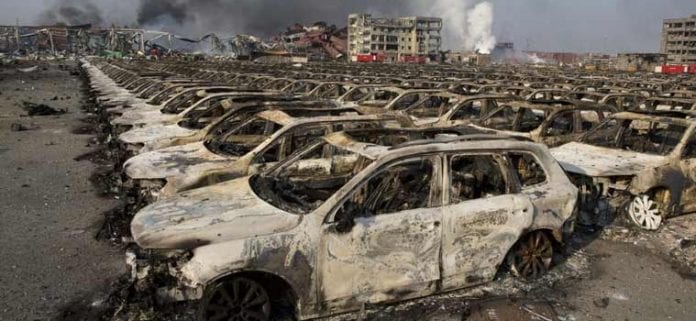Catastrophic explosion in Tianjin, China causes Tianhe-1A supercomputer shut down suspending its space programme
The double blast in Tianjin Wednesday night has compelled China to shut down its supercomputer Tianhe-1A situated at the National Supercomputing Center in Tianjin, which was just kilometers from the blast center.
According to the center’s staff, the shockwaves shattered windows at the National Supercomputing Center and brought down ceilings inside the building impacting the country’s space programme. The twin blasts resulted in broken glass and damaged windows at the National Supercomputer Center in Tianjin.
The China’s state-run Xinhua News Agency said that the blast was so massive that it killed 56 people and injuring 701 people who were later sent to the hospital. Locals report that many hundreds of others suffered minor injuries in the explosion, the causes of which are still under investigation. The rescue operation has cost the lives of 17 fire-fighters as well.
According to the Xinhua News Agency, the storage of nitric acid items such as potassium nitrate, sodium cyanide in the warehouse, which easily explode with heat or collision, may have caused the blasts.
The massive blasts also highlighted the urgency of safely removing toxic chemicals from a warehouse storing hazardous material, which had blown up on Wednesday night.
In spite of the explosion, the facility was working smoothly, as it was protected by a reinforced computer room. Also, there was no damage to its database. However, the centre’s director Liu Guangming said it had decided to shut the unit citing security concerns.
Rated as the world’s fastest supercomputer in 2010, The Tianhe-1A has been primarily used in China’s space programme. The shutdown of the centre has also raised concerns about the other hi-tech facilities in Tianjin’s Binhai New Area—including an assembly plant of China’s super-sized space rockets.
However, the rocket production centre, situated further away from the site of the blasts, was not significantly affected reported the South China Morning Post. The machine weighs 150 tons and covers an area of 1,000 square meters.
“We are nearly 20km away,” the daily quoted an employee at the rocket production centre as saying. “We are all concerned about the explosions, but production goes on.”
Built by the National University of Defence Technology, in Hunan province, the Tianhe-1A has been used mainly for China’s space programmes. The supercomputing centre lies in the city’s Binhai New Area, a district that is also home to the manufacturing and supplying components needed for the construction of China’s super-sized space rockets.
According to existing plans, the rockets are scheduled for shipment from Tianjin harbour and would be launched next year at the new space centre in Wenchang.
Built in the southern metropolis of Guangzhou, China has since developed a more advanced supercomputer, the Tianhe-2, which holds the current title for world’s fastest supercomputer.

